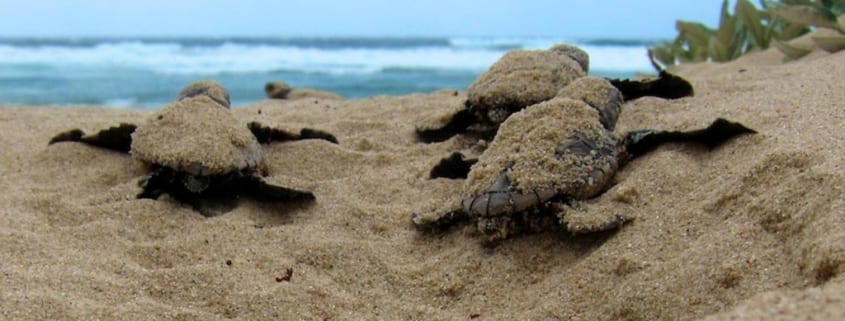World Oceans Day Highlights Shared Connections of Reefs and Rainforests
The United Nations established World Oceans Day on June 8th to celebrate our world’s shared ocean. The occasion raises awareness about the crucial role the ocean plays in our lives and the ways we can all help protect it. This year’s theme, Healthy oceans, healthy planet, is reflected in the relationship between healthy forests and healthy ocean ecosystems.
Last year, Rainforest Trust helped protect 47,328 acres of coastal habitat for the Endangered Maleo – a mound building bird that uses volcanic and solar heated-sand to incubate eggs in large nesting grounds. These coastal beaches are also used by Vulnerable Leatherback and Endangered Green Turtles.
Working with a local partner in Papua New Guinea, Rainforest Trust is helping to expand the country’s first Community Conservation Area by 195,759 acres. Located in eastern Papua New Guinea, the Huon Peninsula is home to one of the highest concentrations of endemic bird and mammal species on mainland New Guinea and adjoins some of the healthiest reef systems in the coral triangle – the most biodiverse coral reef system on earth and the marine equivalent of the Amazon.
These coastal waters are home to the Dugong, a Vulnerable marine mammal similar to a manatee with a tail that is fluked like a whale and the beaches adjoining the peninsula’s forests are used as nesting grounds for Leatherback Sea Turtles.
Leatherbacks are the largest turtles on Earth, growing up to seven feet long and exceeding 2,000 pounds. These ancient reptiles are the only remaining representatives of a family of turtles that trace their evolutionary roots back more than 100 million years. Once prevalent in every ocean except the Arctic and Antarctic, Leatherback Sea Turtle population is rapidly declining in many parts of the world. The breeding population in New Guinea was recently classified as Critically Endangered.
Header photo: Leatherback Sea Turtle. Photo by Jeroen Looyé/CC




